The calendar pointed to June 3, 1946, when French fashion designer Jacques Heim presented a new swimsuit for women in Paris, which he called "atome." The swimsuit consisted of two pieces and the "atom" referred to its small size, comparing it to the smallest - then - known particle of matter. Heim advertised his new creation as "the world's tiniest swimsuit." Despite the fact that it was indeed smaller than the two-piece swimsuits of the 1930s, it nevertheless continued to cover the navel, a "taboo" spot for the time. However, Heim was the first to greatly reduce and "triangulate" the fabric at the bottom, leaving behind the tradition that wanted women to wear real pants to enter the sea.
But despite the fact that it was Heim who first introduced the new bathing suit that would become the ultimate fashion for women's beach wear, he did not take the credit, nor did he reap the glory. And that's because one month later, on July 5, 1946, another French fashion designer, Louis Rear, presented his own creation in Paris, daring the unthinkable, that is, for the first time in history, to leave a woman's navel exposed to public view ! The truth is that Rear's design was incredibly bold for its time and proof of this is the fact that none of the models accepted to wear it on the catwalk, fearing all the world's reactions.
THE RELANCE OF THE REAR IN HEIM
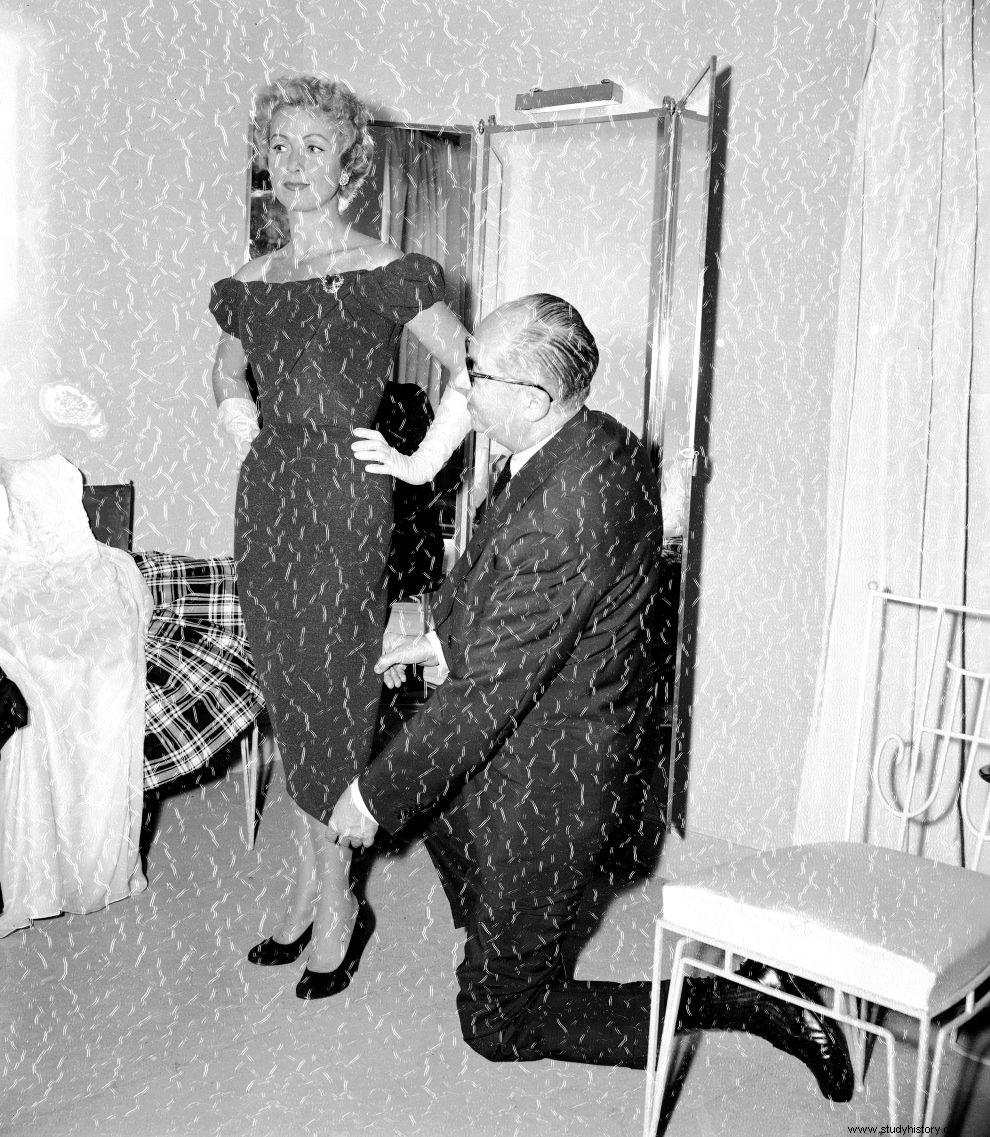
Rear had noticed that women at the beach would gather the fabric from the tops and bottoms of their swimsuits to get a better tan. So he decided to free them from "unnecessary" movements, he "triangulated" the lower fabric even more, lowered it below the navel and joined the front and back triangle with a string! In the same way, she minimized the fabric on both upper triangles that covered the chest, which also tied with laces behind the neck and on the back. Rear's problem was that just four days earlier, on July 1, the US had conducted the first thermonuclear explosion on Bikini Atoll in the Marshall Islands in the Pacific Ocean.
Naturally, the world press devoted extensive coverage to the event, as did French newspapers, and Rear feared that the US nuclear program would overshadow his own revolutionary presentation. But he solved the problem in the most clever way, naming his new creation "bikini", in the hope that the publicity of the atoll would "pull" his own product along with it! Then he was asked to overcome another obstacle, that is, that he could not find a mannequin to show off his new swimsuit. He got in touch with Micheline Bernardini, a dancer and stripper at the "Casino de Paris", one of the most famous music halls in the French capital, and convinced her to be photographed wearing a bikini.
THE "ATOMIC BOMB" OF THE BIKINI

The photo shoot took place at the "Piscine Molitor", a popular Parisian swimming pool of the time, with Micheline posing in the daring bikini, designed with newspaper-style patterns. The 18-year-old stripper was holding in one hand, showing it off, a small box measuring five by five centimeters, in which, according to the caption, the entire swimsuit could fit. Soon after, Rear unveiled the bikini at a press conference, saying he had used just 194 square centimeters of fabric to make it and described it as "smaller than the world's tiniest swimsuit", a direct reference to the creation of his colleague Jacques Heim.
During the presentation, Rear told the assembled journalists that "like the - atomic - bomb, the bikini is small and destructive." The next day, the famous fashion editor, Diana Vreeland, wrote in her column in Harper's Bazaar, that "the bikini is the most important thing since the atomic bomb"! And a real disaster followed. Photos of Bernardini and reports about the presentation of the new swimsuit were published in newspapers and magazines all over the world. The International Herald Tribune wrote nine articles about the bikini, while Michelin received more than 50,000 letters from both women and men expressing their admiration!

Le Figaro supported the new product with the following words:"People longed for the simple pleasures of the sea and the sun. For women, wearing a bikini marked a kind of second liberation. There was nothing sexual about it. On the contrary , was a celebration of freedom and a return to the joys of life." In the end, Heim's "person", although innovative, wanted to maintain a sense of 1940s propriety, but it was Rear's design that caught the world's attention. Haim's swimwear may have been the first to be worn on the beaches and sell the most in the early years, but over time, it was the bikini that prevailed.
Rear, however, was excellent at both promoting and marketing his creation. When the first imitations began to appear on the market, he had filmed an advertisement, in which he "warned" consumers that a swimsuit can only be a real bikini if it passes through a wedding ring! Let's say here that Rear's first bikinis were either cotton or made of jersey. The thing was, despite the initial success they experienced in France, women in the rest of the world continued to prefer one-piece swimsuits. Even Rear himself, when he saw bikini sales falling, went back to designing and selling traditional knitwear.
THE BIKINI IN ANCIENT TIMES

But before we see how the bikini evolved over the following decades, let's first take a leap back in time, to find its roots somewhere in ancient times. We should go to the Chalcolithic Period, 5,600 BC. and in Çatalhöyük, one of the oldest and most important Neolithic settlements in Asia Minor, located in present-day southern Turkey, near Iconium. A clay figurine (statue) of the fertility goddess has been found there, sitting on her throne, between two leopards, wearing what looks like a bikini. The most characteristic example, however, of the deux-piéces (two-piece) swimsuit in antiquity, can be found in the Villa Romana del Casale, near the town of Piazza Armerina in Sicily.
In this Roman mansion, the Italian archaeologist Gino Vinicio Gentili discovered in 1960 a mosaic on the floor of a room now known as the "hall of the ten maidens" (some call it "the crowning of the victor"). This mosaic depicts young women competing in sports such as weightlifting, discus throwing, running, and some sort of ball game. In the lower left, a woman wearing a turban holds the trophies of victory (a wreath and a palm branch), while in the center of the mosaic, the victor appears crowned. But what draws the most attention is that all the girls are wearing a two-piece outfit, which is very reminiscent of today's bikinis.
FROM TROUSERS TO "ANNETTE KELLERMANNS"

In addition to the "Bikini girls", as the mosaic of the Villa Romana del Casale is known today, three depictions of the goddess Aphrodite in similar clothing have been found in different parts of Pompeii. But let's leave antiquity to go back to the 20th century and the evolution of women's swimwear until the appearance of the bikini, since until then, the "Christian West" did not encourage swimming - or bathing - outdoors, so no the need to create similar clothing had also arisen. For the daring women who still wanted to take a dip in the sea, the 18th and 19th centuries "mandated" a long dress up to the ankles, of course with long sleeves, which was usually made of wool!
By the early 20th century, fashion had diverged somewhat and female swimmers now wore a combination of cumbersome dresses above and long trousers below, either woolen or flannel, which when in contact with water became so heavy that many bathers would inevitably go to the bottom and drown. Australian Annette Kellerman, a professional swimmer (and later a vaudeville and film star, as well as a writer), was the one who, in the early 1900s, launched the first one-piece, sleeveless, one-piece swimsuit, starting at neck (a few years later Kellerman showed the first cleavage), it ended at the ankles and was very reminiscent of today's competitive swimsuit leggings.
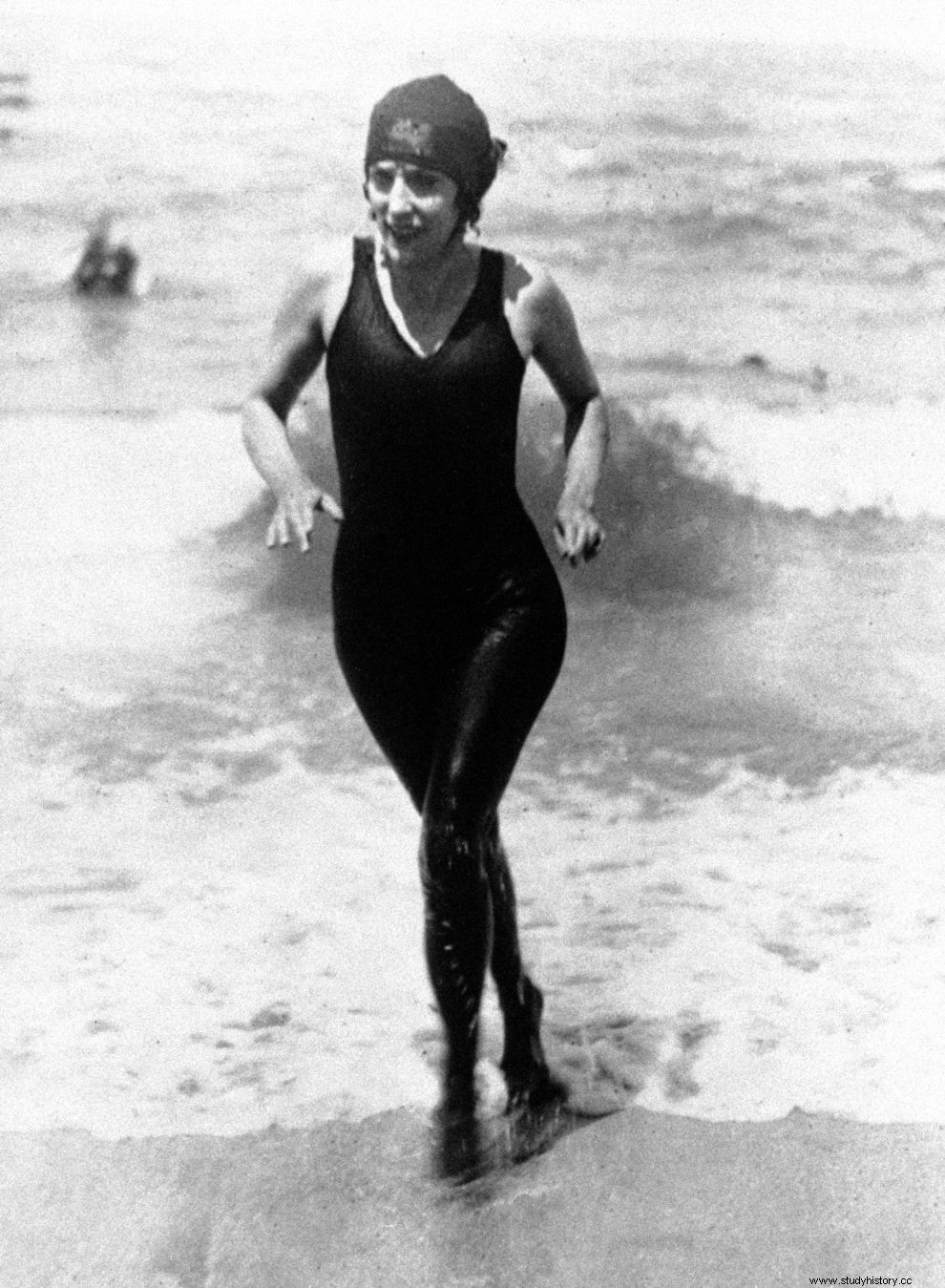
She had reported that in 1907 she had been arrested on Revere Beach in Boston, USA, for public indecency, but there is no evidence in local police records and it is said that Kellerman had made up the whole story for publicity purposes. What is certain is that by 1910, in several parts of Europe, women had adopted her one-piece swimsuit and the success was such that Kellerman created her own line of women's swimwear. The "Annette Kellermanns", as they were known, were the first major step towards modern women's swimwear. In 1913, the American designer Carl Judsen designed the first two-piece swimsuit.
Judsen, inspired by the first women's participation in the Olympic swimming program (Stockholm, 1912), presented a swimsuit with wide shorts at the bottom and a top at the top, completely eliminating sleeves. In the 1920s and 1930s, the fashion for sunbathing began, with organized beaches and spas coming to the fore and designers of women's swimwear now paying great attention to detail and decoration. Rayon (artificial silk) was used as a material in the 1920s, but it proved problematic and was then replaced first by jersey and, from the 1930s, by latex and nylon.
MIDRIFF EXPOSURE AND THE FORBIDDEN BELLY BELLY
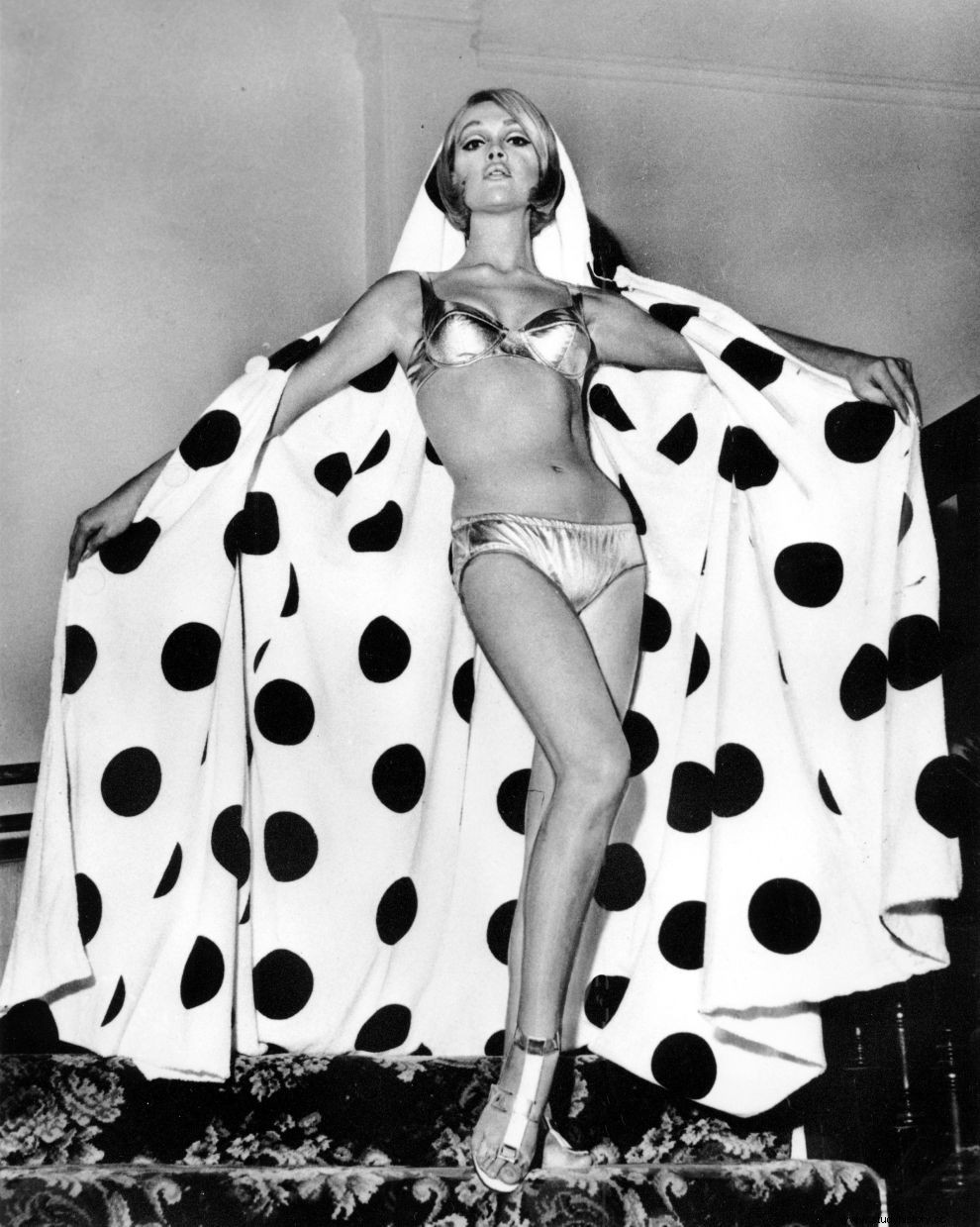
The mid-war swimsuits had already become fitted, but also with a low back. Sleeves were completely removed and shoulder straps appeared (which in turn brought the first cleavages), which facilitated sunbathing, since they could be moved down or to the sides for a better tan. Already in the 30s, as in the 40s, women's bellies began to be more and more exposed to public view, with swimwear constantly being lowered, but putting a "brake" above the navel, which as we mentioned and at the beginning of the text, it was a taboo point for the time, it was the absolute "limit" for designers.
Something that played a catalytic role in increasing the popularity of deux-piéces swimsuits were the big stars of the time who wore them in the movies, as a result they became the "living" advertisement of the new trend. The first to appear wearing such a swimsuit - and with a scandalous large part of her stomach exposed - was the Mexican actress Dolores del Rio in the film "Flying down to Rio" in 1933. However, the so-called "midriff exposure" fashion , was limited for several years only to the beaches and to informal private events, since for a woman to appear in public with such clothing was synonymous with indecency. It took until 1949 for Hollywood to "accept" the new fashion, starring Esther Williams, who first wore a provocative two-piece swimsuit in the movie "Neptune's daughter".
THE "NEW LOOK" OF CHRISTIAN DIOR
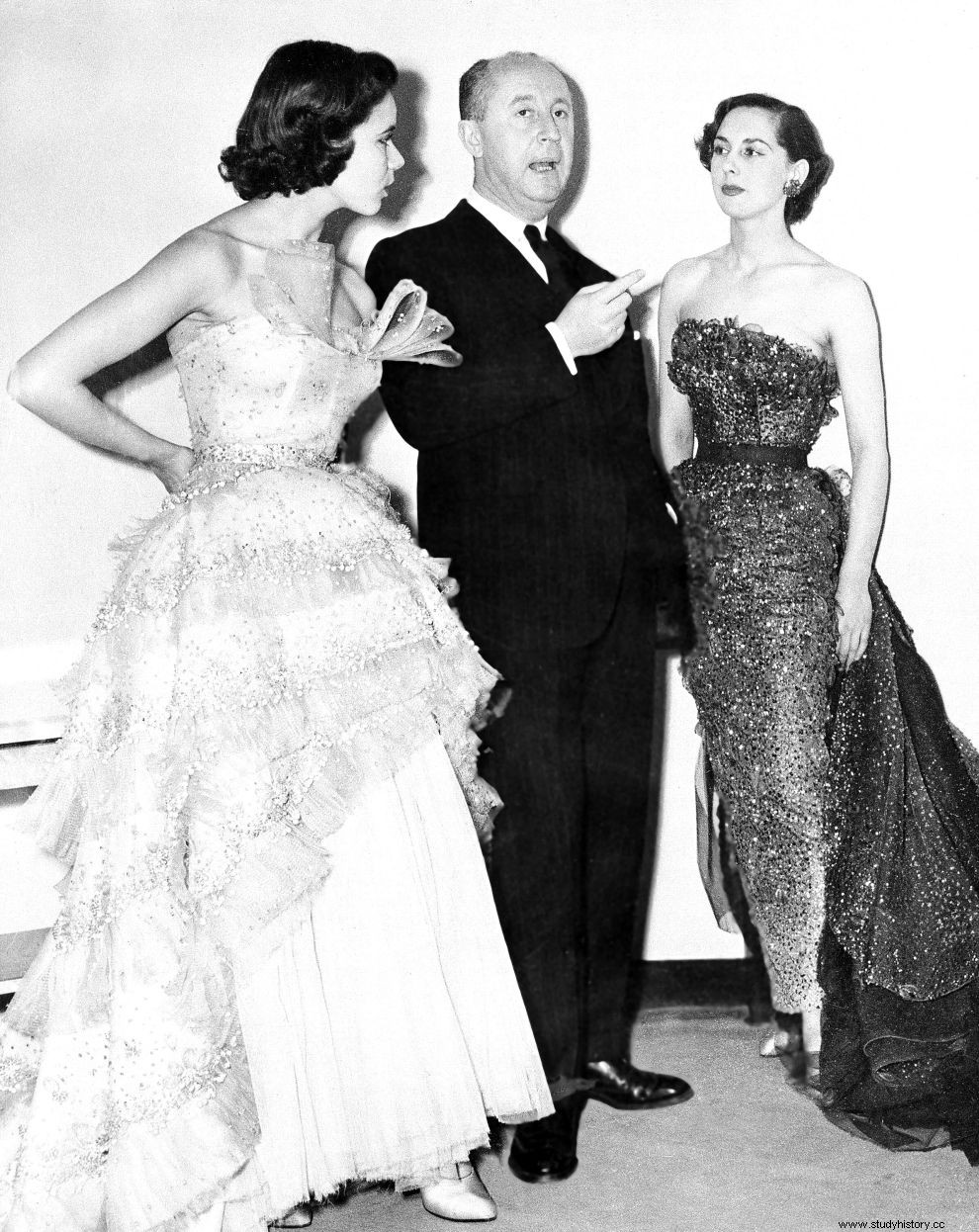
And so we returned to 1946, which was the first summer of freedom for the whole world, after the end of World War II a year earlier, with the unconditional surrender of Japan after the atomic bombs on Hiroshima and Nagasaki. The almost completely destroyed Europe, a continent full of ruins, with huge shortages and deprivations in everything, with millions dead, with even more homeless and unemployed, tried to "invest" in hope and optimism, betting on the only argument it was capable of making the world to smile, the joy of liberation. Fashion was at the forefront, wanting to "color" the gray everyday life.
A year later, in 1947, Christian Dior presented his own "mutiny". In his first collection, the French couturier overturned every previously known standard. To forget the "soldier women in boxer shorts", he designed "flower women". "It's such a new look", an American journalist had excitedly exclaimed during the show, thus naming the new fashion. The famous "New Look", a veritable sartorial revolution, featured swirling dresses, tight-waisted skirts and tulle furrows, rounded necklines, curves that attempted to erase the harsh corners of wartime fashion, and predictably, it was enthusiastically received. .
THE BIKINI REACTIONS

As long as politics failed to provide "images" to counter the gloom, fashion served as a catalyst for the desire to forget the nightmare. And within this exact context, the "birth" of the bikini took place in 1946. With its "rebellious" character, the deux-piéces swimsuit evolved into a symbol of practical elegance, but also a "derivative" of sexual liberation and female emancipation . Heim's creation, and even more so Rear, may initially have been characterized as scandalous, even indecently pornographic, but in the end it followed a parallel course with the liberation of the female body, earning a deserved place in the pantheon of fashion and clothing.
As you will remember, above in the text, we wrote that Rear's bikini, after the first excitement, could not "convince" women to choose it widely. One-piece swimsuits continued to dominate the market, with negative reactions to the bikini being common. In 1950, American tycoon Fred Cole, owner of the Cole swimwear company in California, told Time that he "felt disdain for France's famous bikinis," while Fashion Girl Magazine wrote 1957 in its pages that "there is no need to waste words about the so-called bikini, as it is unthinkable for any girl of delicacy and decency to wear such a thing".
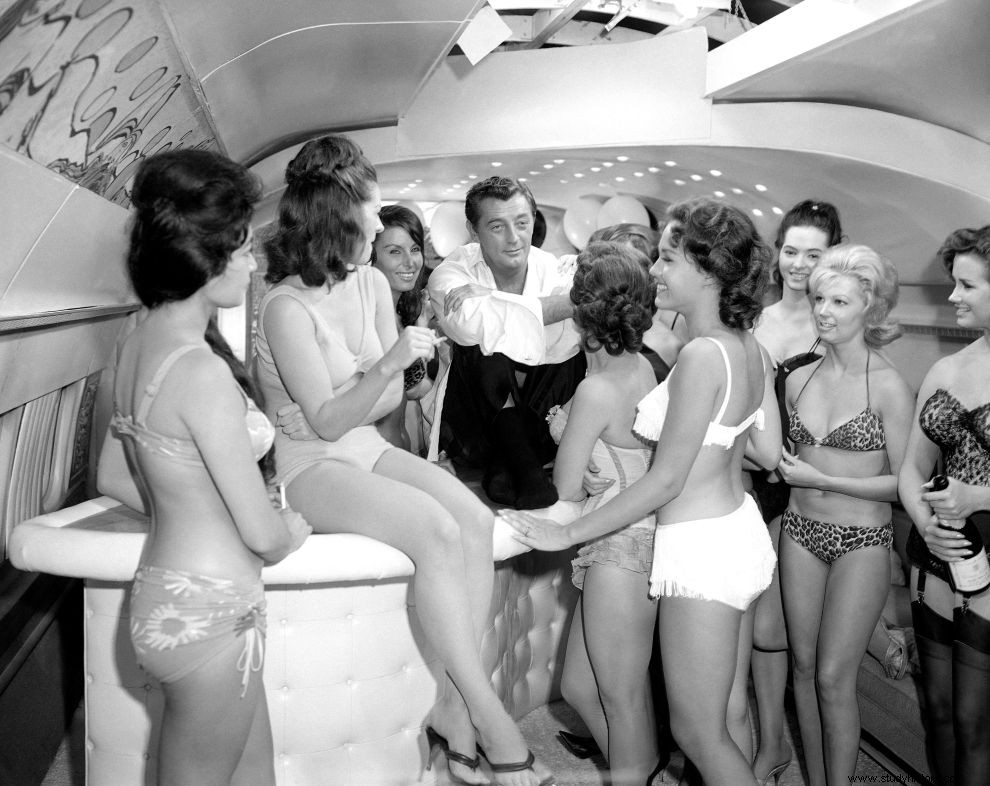
In 1951, the first Festival Bikini Contest was organized in Great Britain, which the international press called "Miss World". The winner was Swedish Kerstin Håkansson, who was crowned wearing a bikini, which sparked a storm of protest, with Spain and Ireland threatening to withdraw from the competition, while Pope Pius XII publicly condemned Håkansson's appearance! The following year, bikinis were banned from the event and replaced with evening gowns, an example followed by many other beauty pageants around the world. In the 1950s, apart from the church, many feminist organizations appeared against the use of the bikini.
Feminists of the time believed that the exposure of the female body to public view in the bikini functioned exclusively as a sexist "tool" for men and had nothing to do with sexual liberation or female emancipation. As a result of all that we mentioned above, the use of this swimsuit was completely banned on the west coast of France, in Spain, Italy, Portugal, Australia and in several states of the USA. In America, according to the "Hays Code", the regulation by which the cinema had to operate and which had been in force since 1934, the use of two-piece swimsuits was allowed, but without showing the navel.
THE BIG STARS "DELETED" THE BIKINI

The bikini's "answer" to all these reactions finally came from the cinema itself. As early as the 50s, but also in the 60s, the big stars of the time adopted its use not only in their films, but also in photo shoots for magazines, public appearances and events, thus "depriving" everything that were heard and written against him. Η Άβα Γκάρντνερ, η Ρίτα Χέιγουορθ, η Λάνα Τάρνερ, η Λιζ Τέιλορ, η Μέριλιν Μονρόε, η Έστερ Γουίλιαμς, η Ράκελ Γουέλς, είναι μόνο μερικά από τα πιο λαμπερά ονόματα του αμερικανικού κινηματογράφου, που εντυπωσίασαν φορώντας μπικίνι και χαρίζοντάς του την απόλυτη λάμψη, περνώντας τη μόδα και στα περίφημα pin-up girls.
Όμως και στην Ευρώπη είχαμε διάσημες ηθοποιούς που εμφανίστηκαν με μπικίνι, με πρώτη και καλύτερη τη 17χρονη Μπριζίτ Μπαρντό στην ταινία του 1953, "Manina, la fille sans voiles", που προκάλεσε διαδοχικά "εμφράγματα" στο αντρικό κοινό. Ακολούθησαν η Ανίτα Έκμπεργκ, η Σοφία Λόρεν και η Τζίνα Λολομπρίτζιτα, με τον Guardian να γράφει ότι το Σεν Τροπέ - όπου όλες οι σταρ φωτογραφίζονταν στη διάρκεια του φεστιβάλ των Κανών - ήταν πλέον η παγκόσμια πρωτεύουσα του μαγιό. Ο Μπράιαν Χάιλαντ ανέβηκε στην κορυφή του αμερικάνικου τσαρτ το καλοκαίρι του 1960 με τη μεγάλη επιτυχία του, "Itsy Bitsy Teenie Weenie Yellow Polkadot Bikini" και όλα έδειχναν ξεκάθαρα πλέον ότι το μπικίνι είχε πετύχει τη μεγάλη ανατροπή.

Το 1962 είχαμε για πρώτη φορά σε εξώφυλλο του Playboy μοντέλο με μπικίνι, ενώ δυο χρόνια αργότερα, το 1964, στο παρθενικό του τεύχος, το "Sports Illustrated Swimsuit Issue" κυκλοφόρησε έχοντας στο δικό του εξώφυλλο την Μπαμπέτ Μαρξ με ένα λευκό μπικίνι. Και βέβαια, το 1962 παρουσιάστηκε ίσως το πιο δημοφιλές μπικίνι μέχρι σήμερα, αυτό της Ούρσουλα Άντρες στο "Dr. No" του Τζέιμς Μποντ, που αποτέλεσε όχι μόνο σταθμό στην πορεία του συγκεκριμένου μαγιό, αλλά συνολικά ορόσημο στην ιστορία της μόδας (κεντρική φωτογραφία του κειμένου). Μια ακόμα σημαντική στιγμή είχε έρθει από το 1950, όταν η Βραζιλιάνα σταρ του σινεμά, Ελβίρα Παζά, εμφανίστηκε στο καρναβάλι του Ρίο με ένα χρυσό μπικίνι, καθιερώνοντάς το από τότε ως το επίσημο ένδυμα της παρέλασης.
Στα τέλη της δεκαετίας του '60, όλες οι νεανικές μπουτίκ σε Ευρώπη και ΗΠΑ, πουλούσαν μικροσκοπικά μπικίνι, με τις δυο στις τρεις πελάτισες συνολικά, να το προτιμούν. Από το 1958, η αμερικανική εταιρεία DuPont είχε παρουσιάσει για πρώτη φορά τη λύκρα (ή σπάντεξ), ένα υλικό από συνθετικές ίνες, γνωστό για την εντυπωσιακή του ελαστικότητα, που "αγκάλιαζε" μοναδικά το σώμα και βοήθησε την εξέλιξη του μπικίνι, που έγινε ακόμα πιο ελαφρύ και εφαρμοστό. Η λύκρα ήταν αυτή που επέτρεψε στον avant-garde σχεδιαστή Ρούντι Γκέρνραϊχ, να δημιουργήσει το μονοκίνι, ένα μαγιό με κάτω μέρος, το οποίο έδενε πίσω από τον λαιμό με δυο κορδόνια, που όμως άφηναν τελείως ακάλυπτο το γυναικείο στήθος.
Ο ΔΙΑΧΡΟΝΙΚΟΣ ΘΡΙΑΜΒΟΣ ΤΟΥ ΜΠΙΚΙΝΙ

Η λύκρα οδήγησε επίσης τους σχεδιαστές στη δημιουργία του στρινγκ-μπικίνι (πρωτοπαρουσιάστηκε το 1974 στη Νέα Ορλεάνη), όπου το πίσω τρίγωνο του κάτω μέρους αφαιρέθηκε τελείως και αντικαταστάθηκε από ένα απλό κορδόνι. Επιστρέφοντας στον Λουί Ρεάρ - που πήρε τελικά όλη τη δόξα από τον Ζακ Χάιμ - να πούμε ότι η εταιρεία του έκλεισε το 1988, τέσσερα χρόνια μετά τον θάνατό του, όμως ο ίδιος είχε προλάβει να ζήσει όλο τον θρίμαβο της τολμηρής του ιδέας, αφού το μπικίνι ήταν πλέον - και παραμένει μέχρι και σήμερα - ο απόλυτος "βασιλιάς" ανάμεσα σε όλους τους τύπους μαγιό, σχεδόν σε όλο τον κόσμο. Παρά τη δυναμική επιστροφή του ολόσωμου τα τελευταία χρόνια, ακόμα και στις μικρότερες ηλικίες, το μπικίνι είναι ο κυρίαρχος.
Και αυτό, σύμφωνα με τον Γάλλο ιστορικό, Ολιβιέ Σαγιάρ, "δεν οφείλεται στη δύναμη της μόδας, αλλά στη δύναμη των γυναικών". Με μια ετήσια αγορά που μετριέται σε δισεκατομμύρια (δολάρια ή ευρώ, μικρή σημασία έχει), το μπικίνι σε κάθε του μορφή στην παραλία (το κλασικό, το μονικίνι, το μικροκίνι, το στρινγκ, το τανκίνι, το σλίνγκ, το μπαντίνι, το σκιρτίνι κλπ), αλλά και στον αθλητισμό (beach volley, στίβος, σερφ κλπ), είναι η νούμερο ένα επιλογή στα γυναικεία μαγιό. Η "μαγεία" του νομίζω ότι χωράει στη φράση με την οποία το περιέγραψε ο ίδιος ο δημιουργός του, Λουί Ρεάρ:"Πρόκειται για ένα μαγιό δυο τεμαχίων, που αποκαλύπτει τα πάντα για ένα κορίτσι, εκτός από το πατρικό επίθετο της μητέρας του"!
